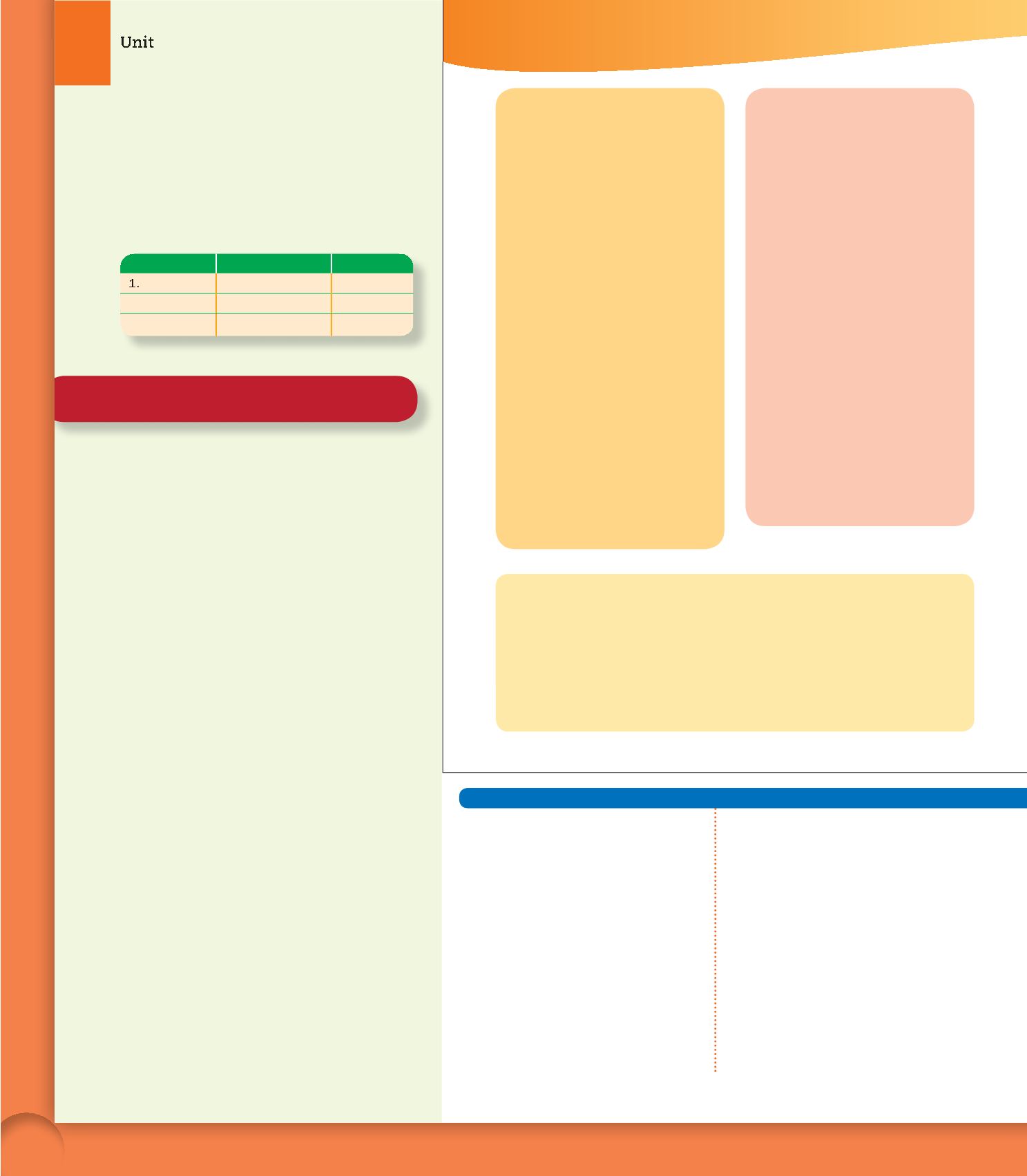

Book 4 Unit 6
114
Differentiated Instruction
DEVELOPING LEARNERS
r
Ask students to indicate which word does
not belong.
1.
retratos símbolos metáforas (retratos)
2.
arcos
ladrillos columnas (ladrillos)
3.
paisaje óleo
acuarela (paisaje)
4.
versos estrofas
pinceladas
(pinceladas)
5.
granito hierro
boceto (boceto)
6.
pincel
cristal
lienzo (cristal)
7.
palacio fachada vivienda (fachada)
8.
narrador proporción perspectiva
(narrador)
9.
fondo desarrollo desenlace (fondo)
10.
puente torre
acueducto (torre)
EXPANDING LEARNERS
r
Have students answer the following
questions:
1.
¿Cómo definirías el arte surrealista?
¿Y el cubismo?
2.
¿Qué has aprendido sobre la arquitectura
en esta unidad?
3.
¿Qué valor tienen los murales hoy en día?
4.
Si pudieras elegir a cualquier pintor para
que pintara tu retrato, ¿a quién elegirías?
¿Por qué?
5.
¿Con qué escritor —del presente o
pasado— te gustaría conversar? ¿Por qué?
6.
¿Con qué personaje de ficción te
identificas? Explica tu respuesta.
REPASO
Vocabulario
Literatura
el ambiente
atmosphere
la prosa
prose
Géneros literarios
el argumento
plot
el relato
story, tale
el ensayo
essay
el desarrollo
development
el símbolo
symbol
la fábula
fable
el desenlace
dénoument, ending
el verso
verse, line
la novela negra
crime novel
la estrofa
verse, stanza
la novela rosa
romance novel
la lectura
reading
el/la autor(a)
author
el lenguaje figurado
figurative language
el/la narrador(a)
narrator
¡Atención!
la metáfora
metaphor
el carácter
personality
la poesía
poetry
el personaje
character
Arte y pintura
la acuarela
watercolor
el boceto
sketch
el fondo
background
la forma
shape
el lienzo
canvas
el mural
mural
el óleo
oil
el paisaje
landscape
la perspectiva
perspective
el pincel
brush
la pincelada
brushstroke
el primer plano
foreground
la proporción
proportion
el retrato
portrait
el tamaño
size
el volumen
volume
apagado(a)
subdued
exagerado(a)
exaggerated
innovador(a)
innovative
preciso(a)
precise
vivo(a)
vivid
destacar
to stand out
influir
to influence
Estilos artísticos
el arte abstracto
abstract art
el arte figurativo
representational art
el cubismo
cubism
el surrealismo
surrealism
¡Atención!
darse cuenta
to realize
realizar
to achieve
Arquitectura y escultura
el acueducto
aqueduct
el arco
arch
la catedral
cathedral
la columna
column
la construcción
construction
la fachada
facade
la mezquita
mosque
el palacio
palace
el puente
bridge
el rascacielos
skyscraper
la sinagoga
synagogue
el templo
temple
la torre
tower
la vivienda
home
lujoso(a)
luxurious
esculpir
to sculpt
Materiales
el aluminio
aluminum
el cemento
cement
el cristal
glass
el concreto
concrete
el granito
granite
el hierro
iron
el ladrillo
brick
el mármol
marble
la piedra
stone
¡Atención!
actualmente
currently
de hecho
actually
6
t
Presentation
.
In this section, students will review all key
vocabulary from the unit, organized by themes,
to prepare for an assessment. Students will
complete practice activities for each
Desafío
.
Activities
Standards
Resources
1.2, 3.1
2.
1.2, 1.3, 3.1
3.
1.2, 3.1
Teaching Suggestions
Warm-Up/ Independent Starter
.
Ask students to leaf through this unit and choose
a work of art, architecture, or literature that
catches their attention in a special way. Then, ask
them to jot down words and expressions that they
can use to describe the work.
Preparation
.
Have students get together with a classmate and
describe the work they chose for their Independent
Starters. Tell students to withhold the name of
the work, its author, location, etc. They should
just concentrate on describing the work itself. For
example:
El fondo es negro, y en el primer plano
tenemos un retrato bastante preciso. Parece ser
un óleo...
Students can leaf through the unit as
they listen to their partner’s description. Then,
once they think they have located the work being
described, they should show it to their partner to
see if they guessed correctly. If time allows, ask
students to switch partners and repeat the activity.
.
Go over the
Repaso
presentation with the class,
modeling pronunciation, stress, and intonation.
Then have students work on the activities.
Activities
2.
To extend this activity, have student pairs write a
paragraph describing a work of architecture they
both like. Explain that they need to describe the
main features of the work, mention some of the
building materials that were used, and give some
information about the architect. If time allows,
invite students to share their paragraphs with
the class.
Vocabulario
REPASO
346


















